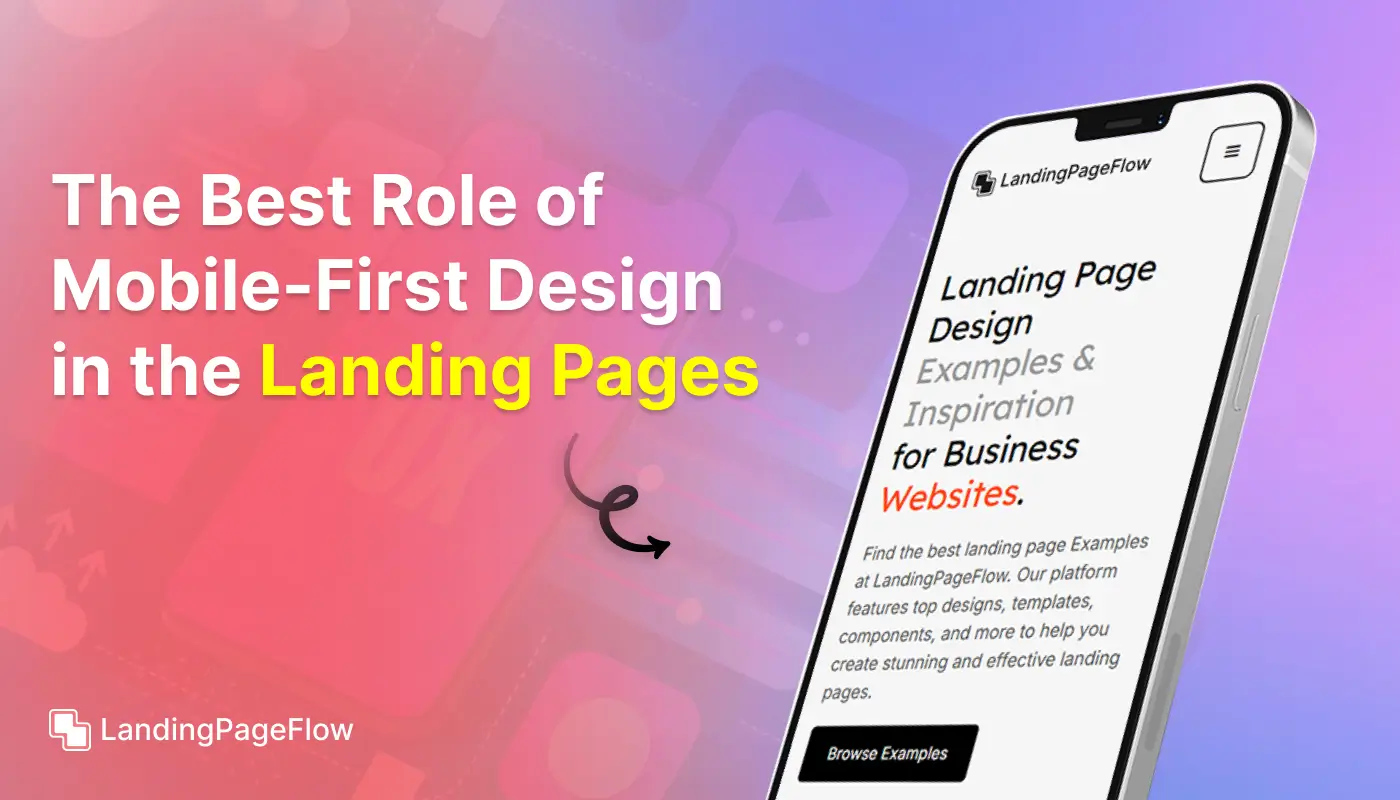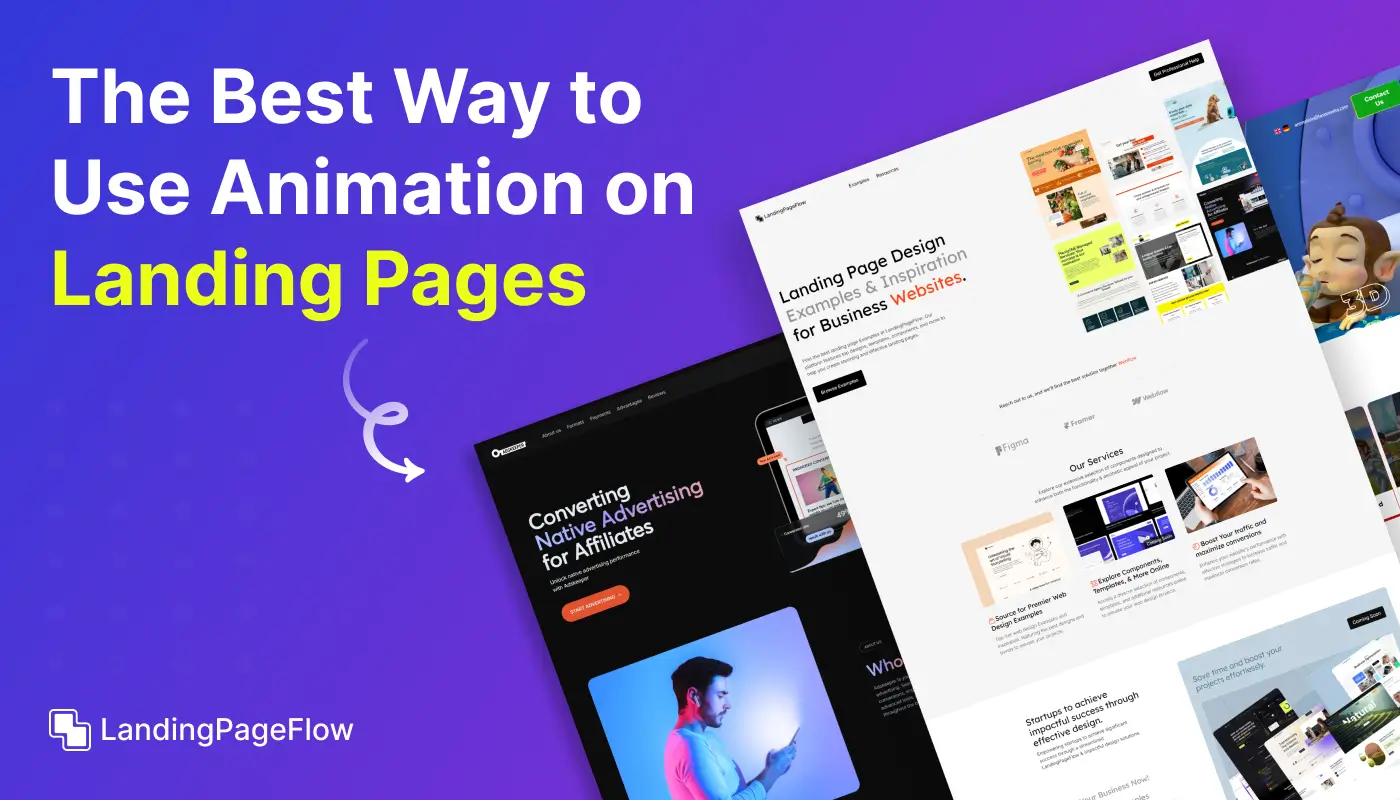Top Tips For Using a Landing Page Maker to Boost Your Conversions

November 14, 2025
Picking the right landing page builder is it's only the start the real key to success is learning how to use it right. Many creators rush the process, overlooking essential tactics that influence conversions.
t’s crucial to approach design with a clear goal in mind and optimize every section for user intent. Some tools offer drag-and-drop simplicity, but real impact comes from thoughtful structure and compelling content.
A great landing page must capture attention fast, guide users smoothly, and reduce any friction to click. Testing layouts and variations plays a vital role in improving user flow and lead quality.
This post offers practical advice on how to use your landing page creator more effectively rather than more difficultly.
"Ready to turn more visitors into customers using your builder?
Claim your free consultation & boost your performance."
Table of Contents
- Choose the Right Landing Page Maker
- Understand Your Audience
- Craft a Compelling Headline
- Use High-Quality Visuals
- Optimize Your Call-to-Action (CTA)
- Leverage Social Proof
- Ensure Mobile Responsiveness
- Test and Optimize Continuously
- Integrate with Other Marketing Tools
1. Choose the Right Landing Page Maker

Choosing the right landing page maker is the first step toward creating effective landing pages.
Look for a tool that offers a user-friendly interface, customizable templates, and robust analytics. Popular options include Leadpages, Unbounce, and Instapage.
Evaluate each tool based on your specific needs, budget, and the features they offer.
2. Understand Your Audience
Before you start designing your landing page, it’s crucial to understand your target audience.
Conduct market research to gather insights about their demographics, preferences, pain points, and motivations. This information will help you tailor your landing page to address their specific needs and increase the chances of conversion.
3. Craft a Compelling Headline

Your headline is the first thing visitors see, so it needs to grab their attention immediately. A compelling headline should be clear, concise, and focused on the main benefit of your product or service.
It should address the visitor’s problem and offer a solution. Use strong, action-oriented language to make your headline stand out.
Examples of Effective Headlines:
- "Boost Your Productivity with Our Time Management Tool"
- "Get Fit Fast: Join Our 30-Day Fitness Challenge"
- "Transform Your Home with Our Stylish Decor Tips"
4. Use High-Quality Visuals
Visuals play a significant role in capturing attention and conveying your message. Use high-quality images, videos, and graphics that are relevant to your product or service.
Ensure that your visuals are professional and enhance the overall look and feel of your landing page. Avoid using generic stock photos and opt for real, relatable images whenever possible.
Tips For Using Visuals:
- Use images that show your product in use.
- Include videos that demonstrate the benefits of your product.
- Use infographics to present data engagingly.
5. Optimize Your Call-to-Action (CTA)
.png)
Your CTA is the most important element on your landing page. It should be prominently displayed and clearly instruct visitors on what to do next.
Use action-oriented language like "Sign Up Now," "Get Started," or "Buy Now" to encourage immediate action. Make sure the CTA button stands out visually and is easy to click.
Tips For Effective CTAs:
- Use contrasting colors to make your CTA button stand out.
- Place the CTA above the fold and at the end of your page.
- Use urgency and scarcity to encourage quick action (e.g., "Limited Time Offer").
6. Leverage Social Proof
Including social proof on your landing page can build trust and credibility. Highlight customer testimonials, reviews, and case studies to show that others have found value in your product or service.
Social proof can help reduce perceived risk and persuade visitors to take action.
Types of Social Proof:
- Customer testimonials and reviews.
- Case studies showcase success stories.
- Endorsements from influencers or industry experts.
7. Ensure Mobile Responsiveness
With a significant portion of web traffic coming from mobile devices, your landing page must be fully optimized for mobile users.
Ensure that all elements are responsive and the page loads quickly on all devices. Test your landing page on different screen sizes to make sure the user experience is seamless across desktop, tablet, and mobile.
Tips for Mobile Optimization:
- Use a mobile-friendly design template.
- Ensure fast loading times by optimizing images and using efficient coding practices.
- Simplify your layout for smaller screens.
8. Test and Optimize Continuously
Creating an effective landing page is an ongoing process. Use A/B testing to experiment with different elements, such as headlines, images, and CTAs, to see what resonates best with your audience.
Monitor key metrics like bounce rates, conversion rates, and time spent on the page to gain insights into user behavior. Use this data to continuously optimize your landing page and improve its performance.
Steps for Testing and Optimization:
- Set clear goals for your tests (e.g., increasing sign-ups by 10%).
- Test one element at a time to isolate its impact.
- Use tools like Google Analytics and Heatmaps to gather data.
9. Integrate with Other Marketing Tools
To maximize the effectiveness of your landing page, integrate it with other marketing tools. This can include email marketing platforms, CRM systems, and social media channels. Integration allows you to streamline your marketing efforts and track the performance of your landing page more effectively.
Integration Tips:
- Use email marketing to follow up with leads captured on your landing page.
- Sync your landing page with your CRM to manage leads more efficiently.
- Share your landing page on social media to drive more traffic.
Conclusion
Crafting a high-performing page takes more than a stylish template, and it requires strategic planning and experimentation. A reliable landing page maker gives you the tools, but the decisions you make determine your results.
Focusing on page speed, clarity, and emotional appeal can help lift engagement dramatically. Data-driven tweaks often outperform complete redesigns and save you time.
By simplifying your structure and strengthening your call-to-action, you can dramatically increase conversions. Always test what works for your audience instead of copying trends blindly.
Let these tips be your roadmap to mastering your landing page builder and creating experiences that convert.

FAQ
1. Do I need coding skills to use a landing page maker effectively?
No, most tools are built for non-coders with visual builders and templates that streamline design.
2. What elements make a landing page more effective?
Clear value propositions, strong visuals, social proof, and a single focused CTA typically perform best.
3. Can I integrate email tools with my landing page maker?
Yes, most platforms offer integrations with Mailchimp, ConvertKit, and other email automation tools.
4. Should I design separate landing pages for mobile and desktop?
It's best to use responsive design, but testing slight layout changes per device can improve performance.
5. How often should I update my landing pages?
Regularly review performance. Updating every few months based on analytics can lead to consistent improvements.



















